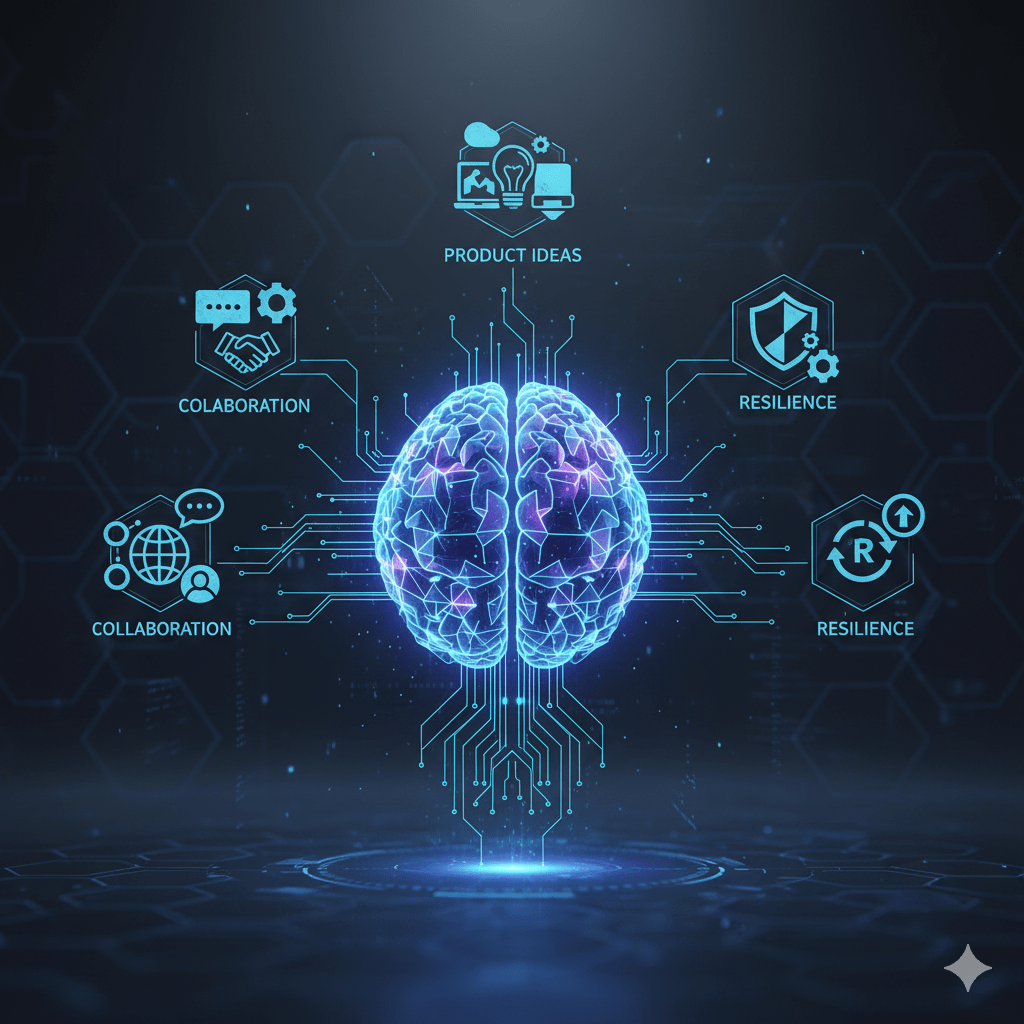Artificial intelligence (AI) capability is rapidly transforming the landscape of digital product innovation, reframing not only how organisations generate novel ideas but also how these innovations are developed, implemented and adopted. In a recent publication in the International Journal of Innovation Management, Dr Shuwen Li and his co-authors from Dalian University of Technology present a nuanced, evidence-based examination of the multitude of ways that AI capability underpins successful digital product innovation. Their mixed methods research identifies not only the technical dimensions of AI, but also its vast implications for value creation, resilience and sensemaking in product-oriented organisations.
The expanding definition of AI capability
AI capability, as defined in Dr. Li’s work, refers to an organisation’s ability to acquire, deploy, and integrate AI-related resources and expertise to support core business objectives, particularly innovation. This includes the technical infrastructure for machine learning, automated data pipelines, and algorithm-driven analytics, but just as crucially, it encompasses the organisational routines, collaborative networks, and cultural mindset necessary to fully leverage AI tools.
The study makes a clear distinction between technical AI capability (encompassing hardware, software, and talent) and dynamic AI capability, which refers to how seamlessly these components interact with business strategy to foster digital innovation. The research highlights that AI capability is not static. Instead, it evolves rapidly through organisational learning, partnerships, and adaptation to environmental turbulence, setting dynamic firms apart from their competitors.
From value co-creation to digital resilience
One of the central findings of the work is that AI capability serves as the backbone for value co-creation in digital product innovation. Value co-creation refers to the collaborative process in which internal development teams, external partners, end-users, and even AI systems collectively shape the features, usability, and relevance of a product.
This collaborative orientation fosters what the authors term “external asset,” which incorporates inputs from digital ecosystems, customer communities, and partner organisations. The deployment of AI enables rapid prototyping, real-time feedback loops, and the integration of diverse perspectives into the product development process. Importantly, these co-creation networks also encourage experimentation, a critical factor for breakthrough innovation in a world marked by volatility and uncertainty.
Alongside value co-creation, the study foregrounds the concept of “digital resilience” as a second pivotal outcome of advanced AI capability. Digital resilience is an organisation’s capacity to anticipate, absorb, and adapt to adverse events, including technical failures, market shifts, and even cyber threats. By embedding AI into operational workflows, firms become more responsive to disruption, identifying patterns, forecasting risks, and implementing corrective measures with unprecedented speed. This internal asset is no longer optional. In today’s digital economy, it is a prerequisite for survival and growth.
Dynamic capability theory meets real-world innovation
A major theoretical contribution of Li’s article is the integration of dynamic capability theory with empirical evidence from AI-enabled product innovation. Dynamic capability theory posits that firms succeed not just by acquiring resources but by developing the ability to sense opportunities, seize them swiftly, and reconfigure their assets in response to ongoing change.
In concrete terms, the research identifies a dual-process model in which AI capability enables external value co-creation while simultaneously strengthening internal digital resilience. These dual tracks reinforce one another: feedback from external stakeholders enriches learning algorithms, while resilient internal systems speed up the cycle of innovation.
The mixed methods design, featuring in-depth interviews, surveys, and case analysis, demonstrates that the most innovative organisations invest aggressively in both aspects. They cultivate strong data partnerships, encourage open knowledge sharing, and foster cultures where employees are empowered to experiment and learn from their failures.
Social sensemaking and the human factor
Despite the technical focus of much work on AI, the work places significant emphasis on the human element in digital innovation. Their study reveals that successful adoption of AI depends on “social sensemaking”, the process by which diverse teams interpret ambiguous signals from their environment, assess potential threats and opportunities, and coordinate appropriate responses.
AI-powered decision support tools can provide recommendations, but it is the collective sensemaking by multidisciplinary teams that ensures these insights are grounded in real-world needs. The study emphasises that firms require structured opportunities for communication and mutual understanding to bridge the gap between data-driven insights and business strategy.
Leaders must act as facilitators, building bridges across functional silos and encouraging dialogue between technical experts, managers, and external collaborators. Organisations that neglect this human-centred approach, the authors warn, risk failing to convert AI investments into sustained innovation and revenue growth.
How firms leverage AI for digital product innovation
The research includes several instructive case studies, illustrating how various organisations have operationalised AI capability:
In the financial technology sector, one firm developed an AI-enabled platform for personalised banking. By integrating datasets from customers, partners and real-time market feeds, the company not only accelerated the development of new product features but also offered dynamic risk management and fraud detection. This combination of value co-creation and resilience improved customer satisfaction and market agility.
Another example comes from the healthcare domain, where AI-driven diagnostic algorithms were used in tandem with clinician expertise. Here, the co-creation process involved continuous feedback from medical professionals, patients, and data scientists, resulting in improvements to both efficacy and ethical oversight. By directly connecting AI capabilities with frontline practitioners, the innovation lifecycle was compressed.
Across all industries examined, the common thread was the strategic alignment of AI investments with both external stakeholder engagement and internal agility. Those firms that treated AI as a strategic enabler, not just a set of tools, reported significantly higher rates of digital product launch success and post-launch adaptation.
AI is fundamentally reshaping the logic of business innovation, empowering organizational decision-making, transforming how individuals work, and redefining relationships between organizations and individuals as well as among organizations. However, AI technology itself isn’t a scarce resource, as it’s readily available in the market. What truly matters is an organization’s ability to integrate AI into business innovation. Therefore, we must closely examine AI capabilities’ impact on business and its interplay with human elements, enabling us to develop evidence-based guidelines that ensure AI effectively serves business management while promoting human well-being.
-Shuwen Li
SEO implications and future research directions
This article is highly relevant for organisations searching for ways to leverage AI for digital product innovation and to build digital resilience in fast-moving markets. For those seeking digital transformation, platform strategies, or agile product development, the evidence from the study will be instructive.
The authors suggest that future research should further explore the role of ecosystem partnerships, regulatory frameworks, and the evolving interplay between automated decision systems and human judgement. The theme of social sensemaking is particularly pertinent for academics, practitioners and policy-makers alike, as it underscores the enduring role of human interpretation and context in otherwise technical innovation systems.
Reference
Li, S., Liu, J., & Yang, X. (2025). How does AI capability enable digital product innovation? A mixed methods design. International Journal of Innovation Management, 29(3-4). https://doi.org/10.1142/S1363919625500173







